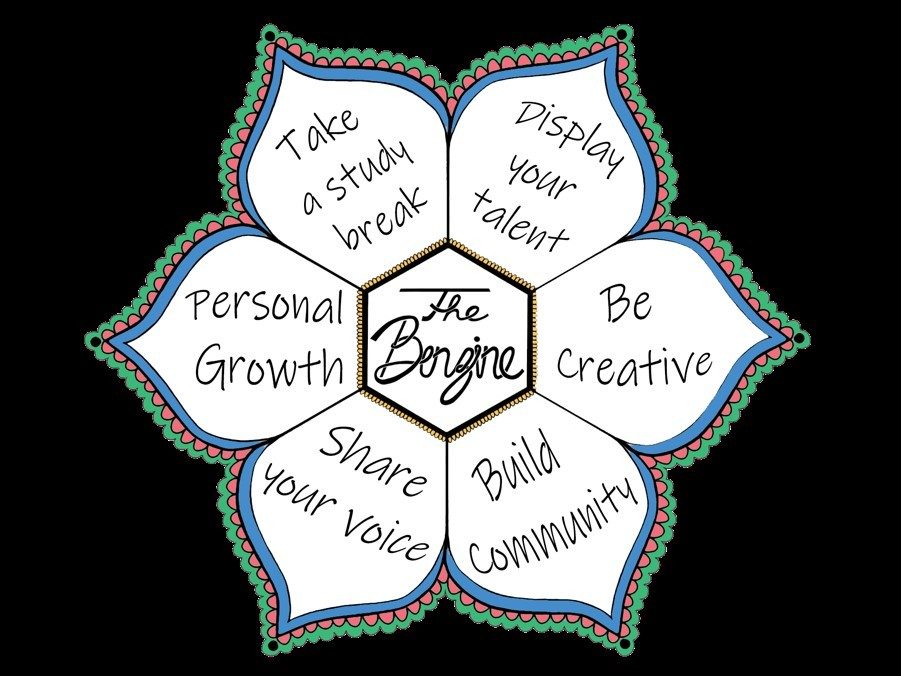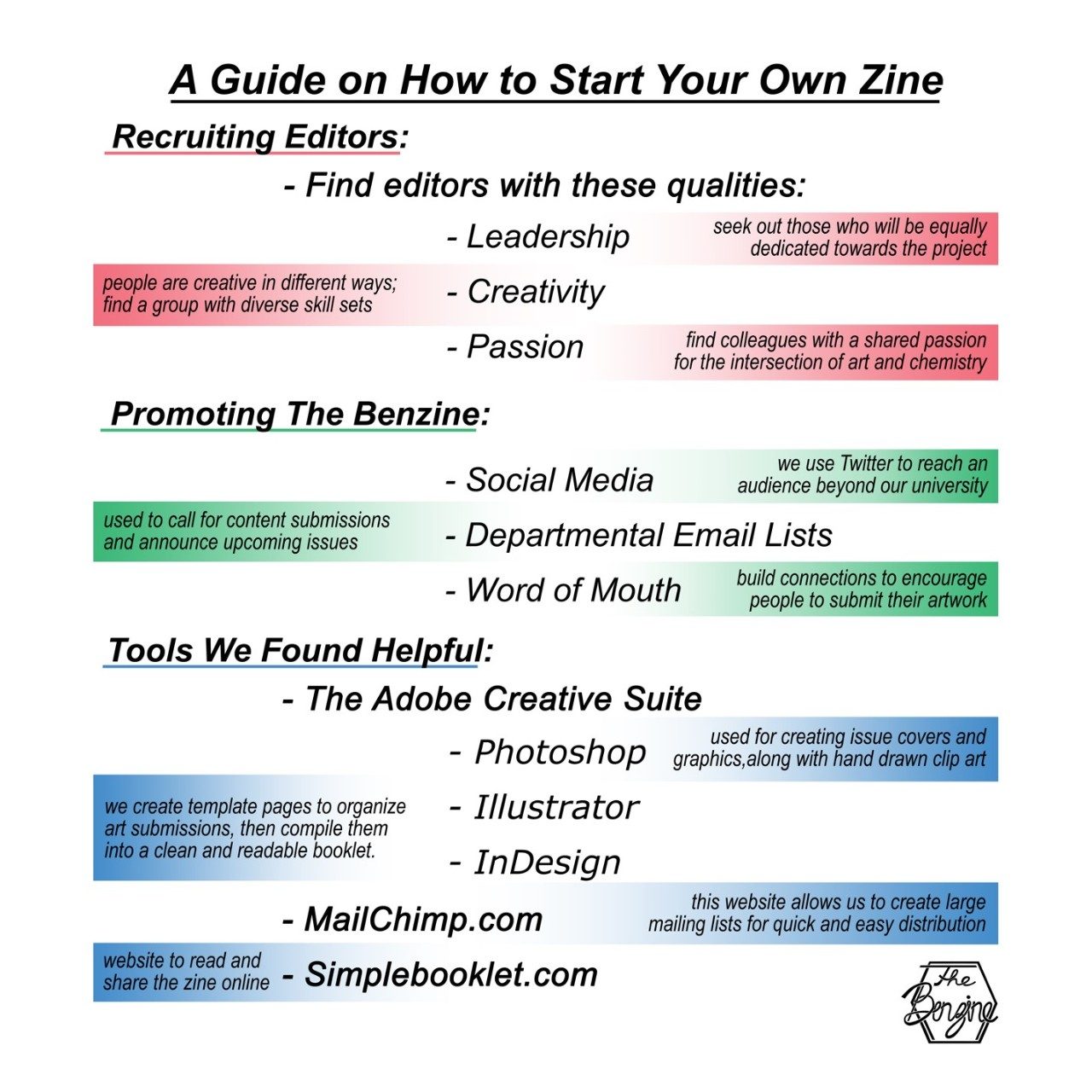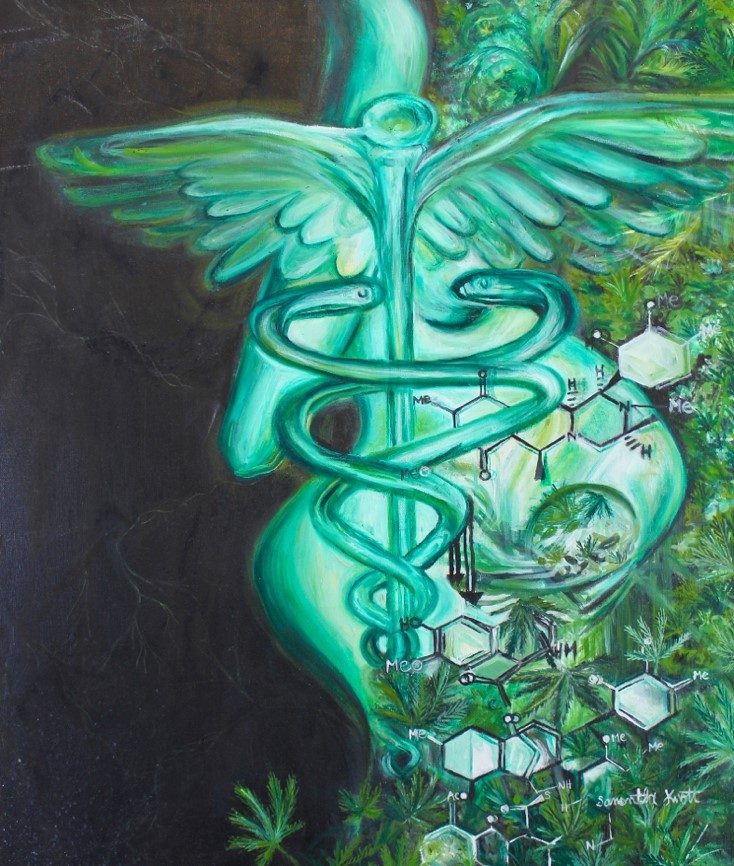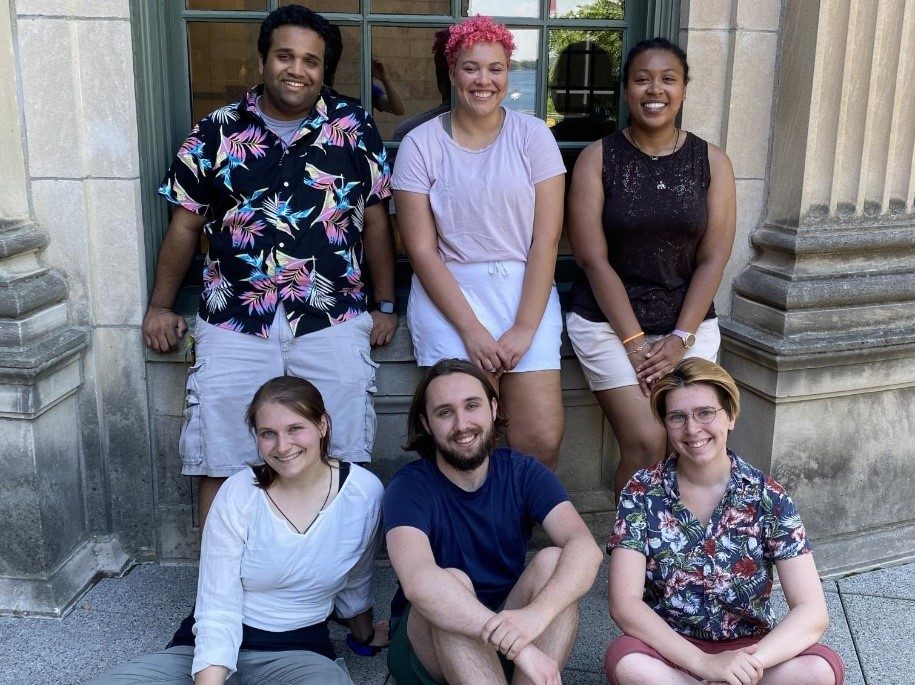Art and science rely on a central practice of creativity. From the creation of new paintings to the discovery of novel reactions, creativity is the foundational tool humanity uses to craft its most important works. As creativity is a practice, the more we engage with it, the more our creative ability grows.1 In this sense, art and science are complementary. By consuming and creating art, scientists are exposed to new perspectives, modes of thought, and ideas that can expand one’s ability to “think outside the box”—one of the primary challenges for all scientists. In short, artistry in science broadens our horizons and enhances our creative ability, which makes us better scientists.
Beyond enhancing the growth of individual scientists, art in scientific communities can complement the promotion of diversity within science. Over the past year, leaders across chemistry asserted that increasing diversity should be a major priority for our community. These leaders have argued valuing diversity leads to scientific excellence and progress and is an ethical necessitiy.2
Just as art exposes us to new perspectives that are useful for our creative development, art can offer us intimate portraits into the multi-faceted identities contained within our local communities. To value diversity, we must first recognize these identities. For this reason and those listed above, a space for art should be present in every scientific community.
What Is a Zine?

Figure 1. The Benzine Flower by Danica Gressel
Zines are micropublications about creative or unconventional content and are commonly found in artistic circles. Modern zines emerged from the science fiction literary communities of the 1940s, where they played an important role facilitating connections between fans. Since then, zines have come to serve as an important method for groups of all types to express themselves, share artistic works, and develop interpersonal connections.
Inspired by these micropublications, we (six chemistry Ph.D. students at the University of Wisconsin – Madison) created The Benzine, a zine celebrating art, science, and diversity in our local chemistry community. Our goal is to provide our colleagues with a place to express themselves artistically beyond the lab, thereby inspiring others to do the same and promoting art throughout our community (Figure 1). To this end, The Benzine highlights the accomplishments, identities and broad passions of local chemists through publication of original artworks crafted by community members.
How to Create a Zine
When we first met each other, we immediately discovered a mutual interest in artistry, creativity and diversity in science. Born from these interests was the idea of creating a zine at the intersection of art and chemistry. Of course, transitioning from an idea to a functioning organization required much work. We first created a set of guiding documents to clearly define our organizational goals, submission guidelines, and leadership structure (Table 1).
Produced in conjunction with these documents was a proof-of-concept publication that we shared with department leadership to demonstrate our idea. Impressed by our plan and proof-of-concept, the department immediately offered assistance with getting our budding organization off the ground and provided approval to publish our first issue of The Benzine. Since then, our chemistry department has continued to be a valuable partner in supporting our mission.
Table 1. List of guiding documents with summaries for The Benzine
| Guiding Document | Document Summary |
| Acceptable Content Policy | Details the types of content the editorial board will and will not publish within The Benzine |
| Content Submission and Review Process | Outlines the processes by which the editorial board will accept and review submissions for publication within The Benzine |
| Editorial Board Expectations Contract | Details the expectations the organization and editorial board members must agree to and meet |
| Editor On- and Off-boarding Process | Outlines the processes by which new editors can be added or existing editors can be removed from the editorial board |
| Mental Health Action Plan | Details the steps the editorial board will take to address potential mental health issues indicated by submitted content |
| Social Media Presence | Outlines the guidelines by which The Benzine operates on social media |
With our organization established, we set out to gather original content for our first issue through a public call for submissions from graduate students and postdocs at UW-Madison. We accepted artistic submissions of all types, ranging from poetry to paintings to recipes. The response was overwhelming; we received more submissions than we could publish, with most arriving just before the deadline in typical graduate school fashion.
To best reflect the diversity of art and chemists at UW-Madison, we designed our content selection process to prioritize selection of works for publication from as many individuals as possible. Then using professional graphic design tools like Adobe InDesign and Photoshop, we compiled the selected submissions into a digital zine that was published using SimpleBooklet (Figure 2). Our first issue provided readers a glimpse into the unique and vibrant chemistry community here at UW–Madison and can be read here.

Figure 2. A guide to starting your own zine.
Ask for Feedback
The feedback from our first release was overwhelmingly positive, supporting our hypothesis that cultivating a space for art in our community was worthwhile. Perhaps unsurprisingly, our colleagues shared our interest in art and diversity.
Aadhishre Kasat, an undergraduate researcher, shared, “I was thrilled to see The Benzine. It immediately put a smile on my face. Finally, an initiative working toward demolishing the science-art divide! It was also very refreshing and validating to see the artistic personalities of all the brilliant scientists in our department.”
Samantha Knott, a graduate student and artist who submitted paintings to The Benzine, stated, “I received many kind messages and praise from other students and members of the department. The opportunity to share these passions also personally gave me a sense of achievement and pride. Graduate school can be stressful, and seeing everyone's work, including my own, was a heartwarming experience” (Figure 4).
Professor and former ACS president Bassam Shakhashiri detailed his thoughts about the zine’s purpose by stating, “each person needs to develop individually through self-exploration and self-expression. This development can be nourished by finding joy in activities beyond the sciences, such as in arts and literature. Each of us does what we do because it interests us, it piques our curiosity, and we enjoy it. When what we enjoy also helps our society, we are fulfilling our responsibility to our fellow humans as well as to ourselves.”
Feedback like this has helped us identify the most important aspects of our project and gave us ample motivation to publish a second issue, which was released in Spring of 2021 and can be read here.

Figure 3. Nature’s Mother Earth – An original painting by graduate student Samantha Knott
Spread the Word to Other Departments
Beyond serving as a platform for the promotion of art and diversity within our existing community, The Benzine has found practical use as a recruitment tool for the chemistry department at UW – Madison. Dr. Desiree Bates, the computational chemistry leader in our department, first demonstrated this use by sharing it with participants in the Chemistry Opportunities (CHOPS) program at UW – Madison.
Desiree noted, “sharing The Benzine with prospective students is important. We want to acknowledge and highlight all the unique individuals within our community. We are more than just scientists in the lab, and seeing the other side of our personalities helps show prospective students that their talents will be appreciated. Our department believes that it is important to fill our lives with personal growth and enrichment. One way to demonstrate this to new students is through sharing of The Benzine, which our department is happy to do.”
The UW-Madison chemistry department admissions committee later built upon the example set by Dr. Bates by sending a physical copy of the first issue of The Benzine to every admitted graduate student during the 2021 recruitment season.
We are proud of how The Benzine has highlighted the broadness of our community, and we hope our work will inspire you to indulge in your own creativity or, even better, produce your own zine celebrating art, science, and diversity in your community. It’s easier than you think, and we’ve provided our guiding documents to help you in this task. The Benzine is a living publication that we will continue to grow. We look forward to watching similar zines created by you, our readers, sprout and grow alongside it and cultivate art in communities across science.
About the Authors

The Benzine Editorial board consists of UW-Madison chemistry graduate students Jairo Villalona, Danica Gressel, Sophya Alamudun, Ray Czerwinski, Philip Lampkin, and Robin Morgenstern. The editorial board organizes, produces, and publishes The Benzine to promote art, science, and diversity in the UW-Madison chemistry community.
References
(1) Lehmann, J.; Gaskins, B. Palgrave Commun. 5, 96 (2019).
(2) Urbina-blanco et al. J. Am. Chem. Soc. 2020, 142, 34, 14393–14396

